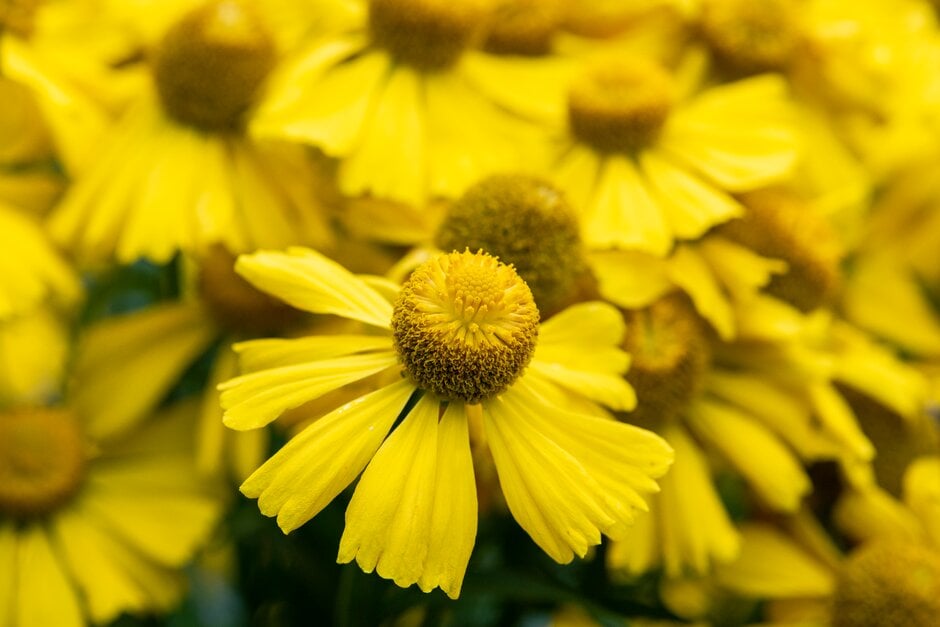Helenium autumnale
autumn sneezeweed
An upright, clump-forming perennial up to 1.5m or more high, with branched stems and ovate to lance-shaped green leaves, 10-15cm long, and flowers 5-7cm across with dark brown discs (yellow in the wild) surrounded by bright yellow rays, which bend downwards as the disc-florets open, from late summer to autumn; the flowers provide pollen for bees and nectar for bees and other insects
Other common names
autumn Helen flowerautumn sneezewort
see moredog fennel
smooth Helen flower
swamp sunflower
yellow star
ox eye
sneezeweed

Buy this plant
Size
Ultimate height
1–1.5 metresTime to ultimate height
2–5 yearsUltimate spread
0.1–0.5 metresGrowing conditions
Moisture
Moist but well–drainedpH
Acid, Alkaline, NeutralColour & scent
| Stem | Flower | Foliage | Fruit | |
| Spring | Green | |||
|---|---|---|---|---|
| Summer | Brown Yellow | Green | ||
| Autumn | Brown Yellow | Green | ||
| Winter |
Position
- Full sun
Aspect
East–facing or South–facing or West–facing
Exposure
Sheltered Hardiness
H7Botanical details
- Family
- Asteraceae
- Native to GB / Ireland
- No
- Foliage
- Deciduous
- Habit
- Clump forming
- Genus
Helenium may be upright, clump-forming annuals, biennials or herbaceous perennials with simple leaves and showy daisy-like flower-heads over a long period
- Name status
Correct
- Plant range
- Americas
How to grow
Cultivation
Grow in full sun in fertile, moisture-retentive, humus-rich soil, and provide support for the tall stems; divide every two to three years to maintain vigour
Propagation
Propagate by seed in spring, by division in autumn or spring, or by basal softwood cuttings in containers in a cold frame in spring
Suggested planting locations and garden types
- Wildlife gardens
- Cottage and informal garden
- Prairie planting
- Flower borders and beds
- Cut flowers
Pruning
No pruning required, but deadheading will prolong flowering
Pests
Generally pest-free
Diseases
Generally disease-free, but may be susceptible to leaf spot
Get involved
The Royal Horticultural Society is the UK’s leading gardening charity. We aim to enrich everyone’s life through plants, and make the UK a greener and more beautiful place.